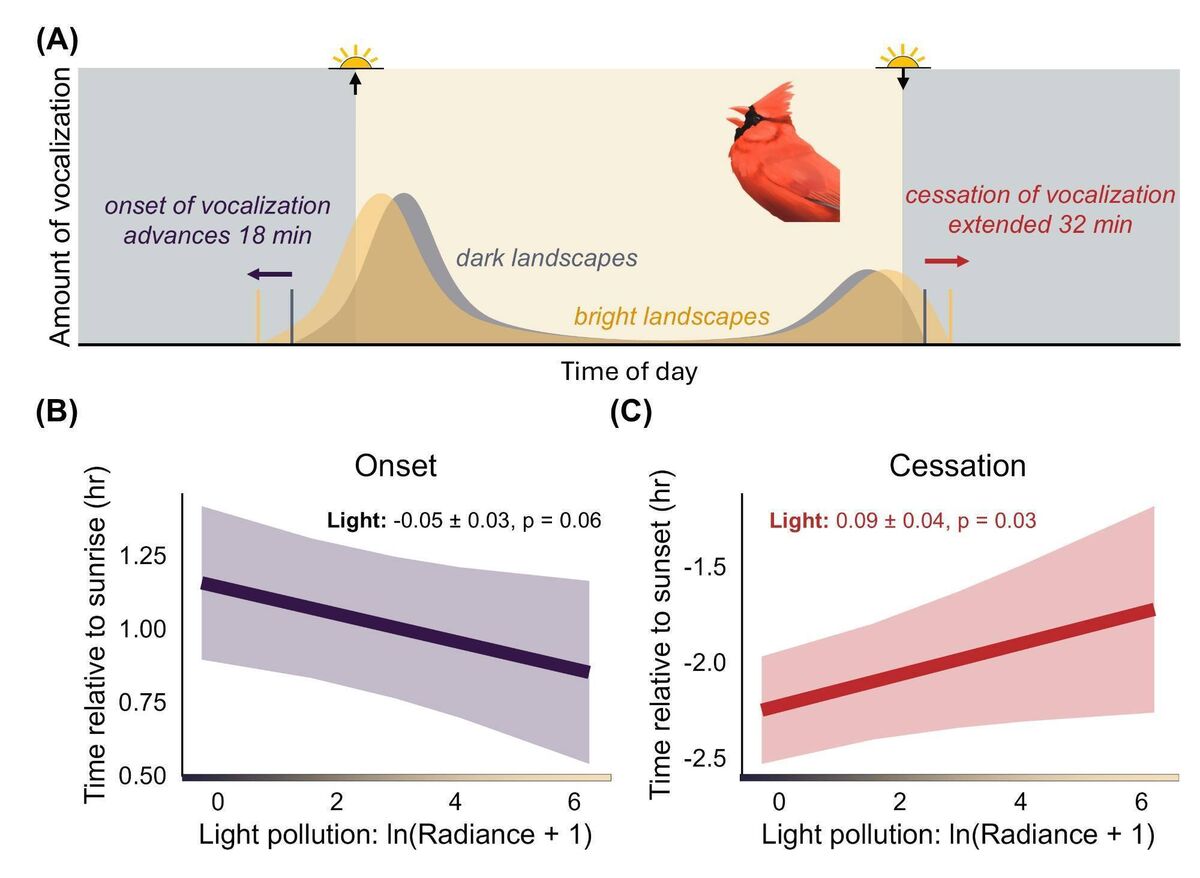The working day of some birds may be up to an hour longer than ‘normal’ due to artificial light

Brent Pease, assistant professor in SIU Carbondale’s School of Forestry and Horticulture, displays a BirdWeather PUC (portable universe codec), a weatherproof device with microphones, Wi-Fi, GPS, environmental sensors and AI. Picture: Russell Bailey
In a dark time, the eye begins to see, I meet my shadow in the deepening shade — Theodore Roethke.
Darkness, like silence, is in short supply nowadays; perpetual light shines upon us throughout both day and night. About 80% of people worldwide, and almost all Europeans, live under artificial light. We no longer spend the hours of darkness tucked up in our beds. The health implications of this light revolution are debated, with one in three of us sleep-deficient and drivers nodding off behind the wheel.
But attitudes are changing. Once feared and loathed, the silent darkness has become an attraction. The Mayo Dark Sky Park, between the Nephin Mountains and the Atlantic coast, attracts visitors eager to experience Ireland’s most pristine night vistas.
Whether opting for the dayshift or the nightshift, wild creatures also respond to the circadian diurnal cycle.
But how does artificial lighting affect them?
Size doesn’t seem to matter. Flying insects are attracted to streetlights. The ‘dorsal-light response’ (their tops always oriented towards brightness), makes them orbit lights rather than fly past them. Navigation is disrupted and predators, such as bats, devour the mesmerised victims. Insects are declining catastrophically worldwide, but the extent to which artificial light is implicated in their demise isn’t known. Migrating sea-turtles, our largest Irish reptiles, are also led astray by coastal lights.
Most birds, like humans, sleep at night, but light pollution can trigger strange behaviours; robins famously sing around streetlamps in the dead of night. Mocking birds do likewise in North America. Lighthouses and brightly-lit high-rise buildings attract migrating birds.
But are there other, hidden, dangers?

Scientists Brent Pease and Neil Gilbert have been examining the effects of light pollution on birds. Their findings appear in the current edition of .
The times at which birds begin singing in the morning are fairly well documented worldwide, providing Pease and Gilbert with a "global acoustic data set of over 60 million detections, representing 583 diurnal bird species". Their analysis showed that, overall, light pollution caused birds to sing, on average, 50 minutes longer that they would were artificial lights absent. Birds in the brightest environments tended to begin singing up to 20 minutes earlier in the morning and continued doing so up to half an hour later in the evening. This means that the working day of some birds may be up to an hour longer than ‘normal’.
A bird in an artificially lit environment has less time for rest and recreation but will have more time to forage and feed. It might also be misled into migrating too early, or too late, and lured into brightly lit cities. The timing of breeding may be disrupted.
Eye size matters. Species such as our Eurasian blackbird, and presumably the robin with its larger eyes than other similar-sized birds, are particularly responsive to increased light levels.
Clearly, artificial light profoundly affects birds. The long-term consequences of the changed ‘timetables of life’, however, remain unclear. Presumably lights also impact wild mammals.
Their secretive behaviour makes them much more difficult to study.
In the meantime; come back darkness, all is forgiven!








